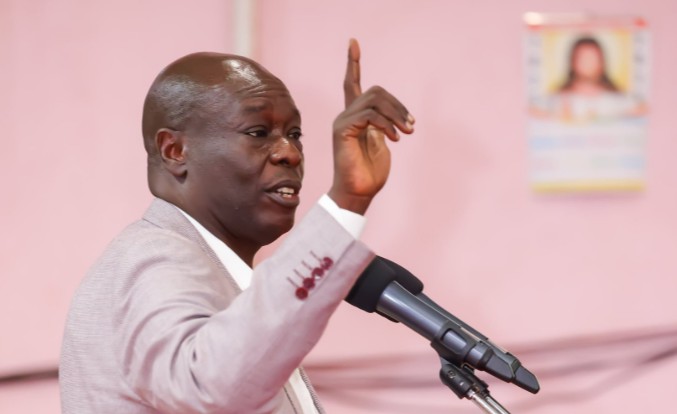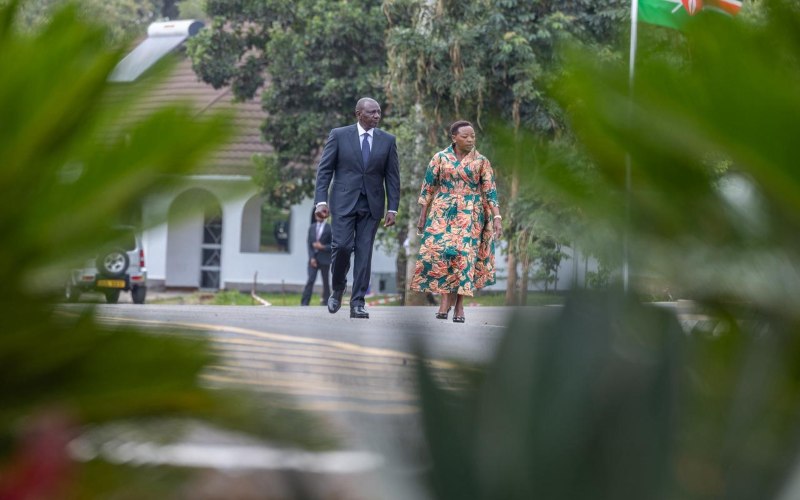Explainer: What you need to know about ceremonial Mace

Nairobi County Assembly Speaker Ken Ng'ondi being handed over the Sh33 million gold-plated mace at the chambers on September 10, 2024
The Nairobi county assembly has purchased a new mace worth millions.
Nairobi County Assembly Speaker Kennedy Ng'ondi on Tuesday revealed that the mace cost taxpayers Sh33million.
More To Read
This is despite the Annual Development Plan 2023-2024 noting that it would cost Sh30 million to acquire an 18-carat gold-plated mace.
The tender had been advertised in January with the closing date being February 12, 2024.
What is a Mace?
According to the National Assembly website, the ceremonial Mace is a highly ornamented staff of metal, wood or other materials, carried by a Mace-bearer or placed before a sovereign or other high official; in civic ceremonies or before a revered gathering to symbolize authority.
Significance of the Mace
The Mace is a vital symbol of parliamentary tradition and authority in the National Assembly, Senate, and all 47 county assemblies.
It signifies the power and dignity of the House and the Speaker presiding over it.
Without the Mace, no formal business can take place. As an essential part of parliamentary regalia, the Mace grants legality to the meetings of Members of Parliament, Senators, and Members of County Assemblies.
The Serjeant-at-Arms is responsible for the Mace, carrying it on their shoulder while leading the Speaker's Procession into the House daily and during ceremonial events.
Key ceremonies include the opening of each parliamentary term by the President and joint sessions of the National Assembly and Senate, such as when the President addresses Parliament.
Interfering with the Mace, including attempting to remove it during a session or disrupting the Speaker's Procession, is considered gross misconduct and is punishable under the National Assembly Standing Orders.
Historic details
The earliest ceremonial Maces were practical weapons intended to protect the king's person, borne by the Serjeant-at-Arms, a royal bodyguard established in France by Philip II, and in England probably by Richard I.
By the 14th Century, these Serjeants' Maces had started to become increasingly decorative, encased in precious metals.
The Mace as a real weapon went out of use with the disappearance of heavy armour.
The history of the civic Mace (carried by the Serjeant-at-Arms) began around the middle of the 13th Century.
The Mace as used in the National Assembly of Kenya
In 1958, the Speaker of the Legislative Council, Cavendish Bentick, received the Mace from the Crown Prince.
Since then, the Mace has been an integral part of Parliament's legislative proceedings.
After Kenya gained independence, two Maces were used by the bicameral Parliament from 1963 to 1966.
However, only one was used after the Senate was dissolved, until 2013, when the new Constitution reintroduced the Senate.
On December 14, 1964, during the second session of the First Parliament, President Jomo Kenyatta officially presented the Maces to Parliament.
He handed them to the two Speakers, Sir Humphrey Slade of the House of Representatives and Timothy Chokwe of the Senate to symbolize the Constitutional authority of the two Houses, which is derived from the people of Kenya.
Since then, the Mace has remained an essential part of parliamentary business in Kenya.
Top Stories Today












































